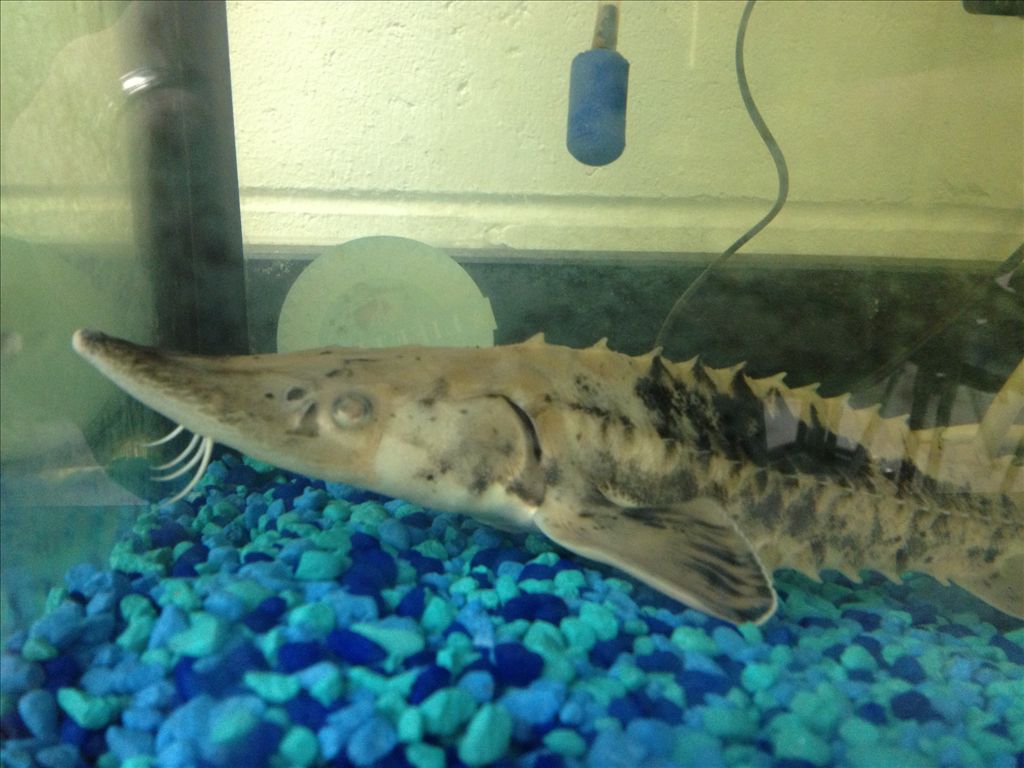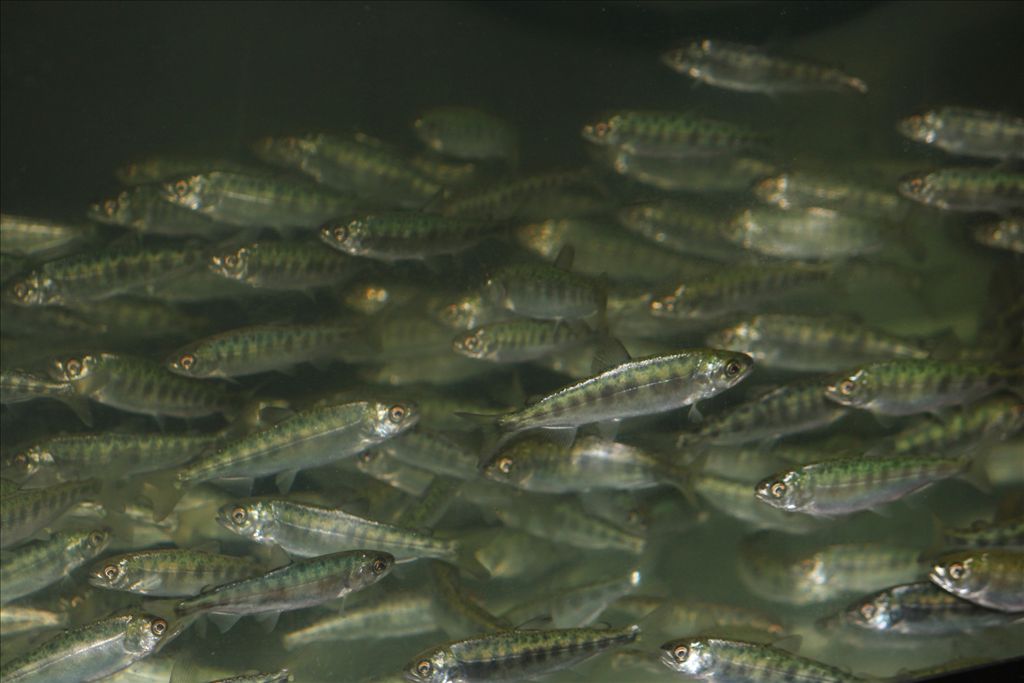Across northeast Michigan, students are raising different fish species in the classroom. Through these projects, they connect with area scientists to help with restoration and stocking projects, and they learn about the needs and characteristics of the fish. They also increase community awareness about our fisheries by developing promotional materials about the fish and/or connecting their project with younger grades at their school. This hands-on learning activity allows students to connect to their area watersheds while benefiting their local community and environment.
LAKE STURGEON IN THE CLASSROOM
At the beginning of the school year, students receive a fingerling Lake Sturgeon from Sturgeon for Tomorrow and MI Department of Natural Resources to care for throughout the year. Students are responsible for maintaining the tank, testing the water quality, and feeding bloodworms to the Lake Sturgeon. Near the end of the school year, the fish is released, and in 2014, the different fish grew from 5 inches up to 18 inches when released. Prior to its release, the sturgeon is chipped with a PIT tag. This tagging allows future students to stay connected to the fish since with each recapture they will be notified with the location and an update of its growth and health. This project is a perfect example of place-based stewardship education since students are learning about their local watershed a threatened fish species while improving local fisheries with the fish’s release.

Involved Schools: Cheboygan Elementary School, Thunder Bay Junior High, Onaway High School, Alcona Elementary, Inland Lakes Elementary
Involved Community Partners: Sturgeon for Tomorrow, MI DNR, Michigan Sea Grant, U.S. Fish and Wildlife, MSU Department of Fisheries and Wildlife
CHINOOK SALMON IN THE CLASSROOM
From the fall to spring semesters, students raise, care, and maintain Chinook Salmon* in the classroom. They receive the salmon as eggs from MI DNR, and throughout the school year, they see the fish grow from egg, to hatchling, to smolt. Through this project, they learn about life cycles and habitat needs, and in the spring semester, the fish are released into local watersheds allowing these students to improve fish populations.
*While the Chinook Salmon is not native to this area, they were introduced and subsequently naturalized to reduce invasive Alewife fish populations. They are also included in the Joint Strategic Plan for Management of Great Lakes Fisheries. Additionally, this fish serves as a biological indicator for the health of our rivers serving as spawning sites.

Involved Schools: Alcona Elementary School, Besser Elementary School, Onaway High School, Oscoda High School, Rogers City Middle School, All Saints Catholic School
Involved Community Partners: MI Department of Natural Resources
LAKE TROUT IN THE CLASSROOM
As part of the Thunder Bay Reef Restoration Project, Ella White 5th graders raise Lake Trout in the classroom. In the fall semester, they receive Lake Trout eggs. Throughout the school year, these fish grow allowing the students to learn about life cycles, and in the spring, they release Lake Trout fry on the artificial reef in Thunder Bay, Lake Huron.
To release the fish on the reef, the students engineered and built ROVs (remotely operated vehicles) in cooperation with Thunder Bay National Marine Sanctuary. They also used a 3-D printer to produce a system (adapting a plastic pop bottle) to release their young lake trout to their underwater reef habitats. Excitingly, in March 2015, this project was selected as winner in the Teach for the Planet Challenge, and as result, these students won $10,000 in DonorsChoose.org credits for their engineered lake trout delivery system project! To learn more about this student-led project, visit the Ella White- Native Fish and Restoration Project page.
Involved School: Ella White Elementary School
Involved Community Partners: MI DNR, U.S. Fish and Wildlife Service, Thunder Bay National Marine Sanctuary, MI Sea Grant